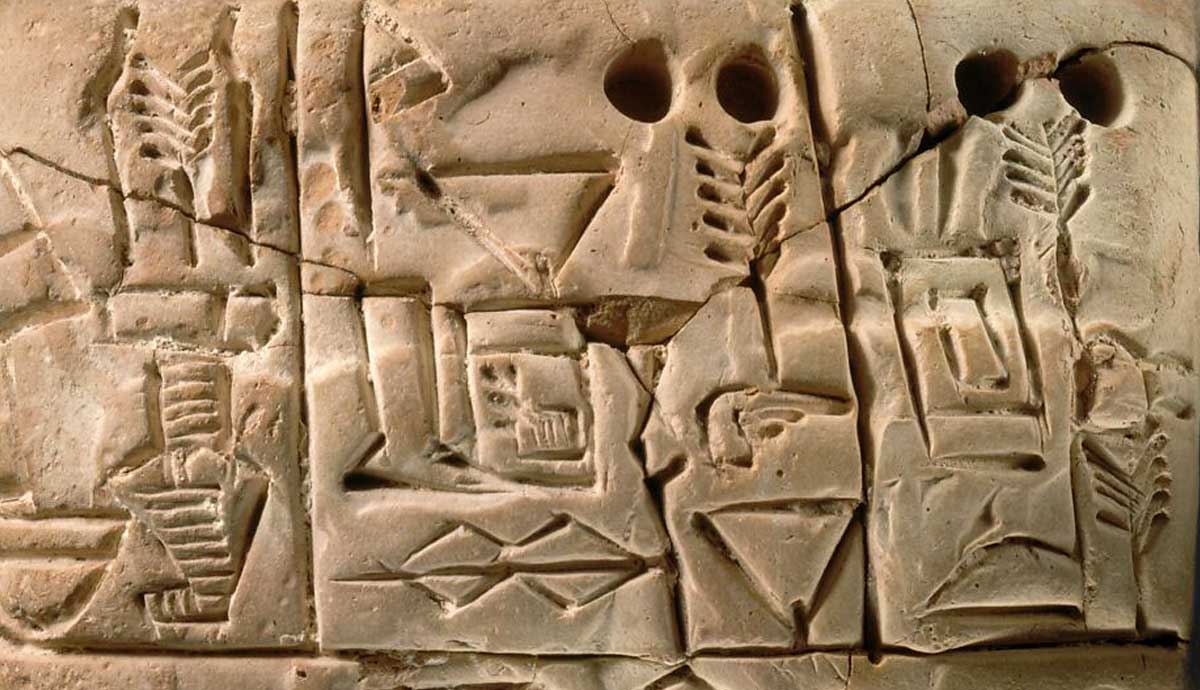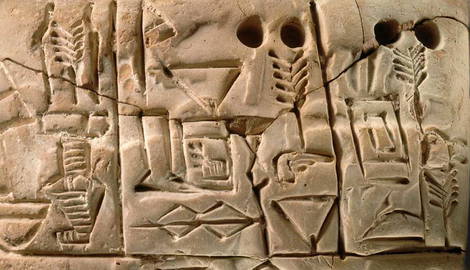
In the modern world, it is difficult to imagine a life without writing. Transcribing information by way of symbolic marks has become a foundational pillar of how human civilization is able to operate. Without it we would be completely lost. In fact, it could be suggested that if writing were to completely disappear, civilization would collapse! Such is the importance of the written word. So, when did it all start?
The Beginnings of Human Civilization

The human species has existed for hundreds of thousands of years and for the overwhelmingly vast majority of that time, humans existed as hunter-gatherers. Life was nomadic. Time was likely seen as something that was cyclic, as opposed to being something with a beginning and an end.
This state of affairs changed around 15 000 years ago. Why this happened is a subject of great debate. For decades, the accepted theory was that it was done out of a need to look after crops as it was a more productive source of food. More recent discoveries, such as those at Göbekli Tepe, suggest that the move from a hunter-gatherer to an agricultural society was done out of the desire to remain close to religious sites. And thus the sedentary living required the invention of agriculture.
Whatever the reason, agriculture produced food in enough quantity that human beings no longer had to invest all their time in survival. As such they turned their attention to other pursuits such as pottery, weaving, and the domestication of wild animals. Eventually the need arose to record languages. Systems of writing began being developed.
The First Civilizations

Civilization first appeared in the Middle East around Mesopotamia and the Nile in a region known as the Fertile Crescent. The early civilizations that were born here became complex societies that needed written records in order for society to be administered.
Naturally, it was these civilizations that invented the first writing systems known to history. The Sumerian and Egyptian Civilizations are considered to be the first civilizations, and both civilizations created their own unique writing systems. While Egyptian Hieroglyphics were invented shortly before 3100 BCE, it was the Sumerians who first wrote their words down around 3500 BCE.
The Sumerian Script

First used around 5 500 years ago, the Sumerian script is the oldest writing system on record. It went through major evolutionary changes during its lifetime and became known as cuneiform. The system started as a series of logographic morphemes thought to represent the need for bookkeeping. As the need arose to communicate more complex ideas, the script found uses outside of administrative purposes and became the written representation of the Sumerian language.
It was written in clay using a reed stylus. The need for faster writing led to simplification of the symbols, and pictures evolved into ideograms easily recognisable as the cuneiform script with its series of distinctive lines and wedges. The script also evolved to include syllabic symbols, i.e. images that represented sounds rather than words. Words could also be written via phonetic representation rather than through ideographic means.
An example of this in modern usage is the Latin Script used in English or the Japanese Hiragana syllabary. The letters or syllabograms represent sounds rather than in systems such as the Chinese languages which use ideographs to represent words.
The script would find use in other languages too. As the Sumerian civilization gave way to the Akkadians, the Babylonians, and the Assyrians, the script was preserved and used to represent the languages of these and other empires, kingdoms, and peoples.
Conclusion

The Sumerian language was the first to have a written form. It comes from a time where archaeological evidence is scarce, thus creating a stage for many theories and debates. Nevertheless, over five millennia ago, a smart Sumerian made marks in clay and their civilization began a giant leap forward.










